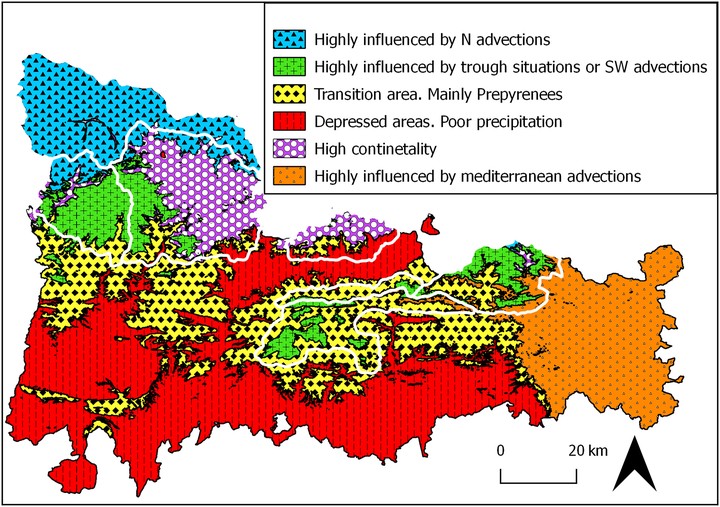A mixed application of an objective synoptic classification and spatial regression models for deriving winter precipitation regimes in the Eastern Pyrenees

Abstract
Management of hydric resources in alpine mountains requires spatial knowledge of precipitation as a variable of noteworthy importance in the study of hydrological hazards (avalanches, landslides, floods, etc.), especially during the winter season. We therefore study the spatial distribution of mean daily precipitation (MDP) and daily precipitation probability (DPP) in the Eastern Pyrenees, based on a previous objective synoptic classification defining the most frequent atmospheric patterns during the winter season (November–May) between 1990 and 2015. The synoptic classification provided 12 circulation weather types. For each of these, we obtained MDP maps and DPP maps possessing a threshold equal to, or greater than, 2, 5, 10, 20 and 50 mm. The best fit of the models was obtained in the DPP ≥ 2 mm, with an adjusted R2 of around 0.8, followed by the models showing MDP and DPP ≥ 5 mm, with an adjusted R2 generally between 0.7 and 0.8. Finally, we performed an unsupervised classification of the 12 MDP models in order to obtain a categorical and simplified cartography explaining the winter precipitation regimes in the Eastern Pyrenees.